Before this interview, I wanted to see what it was like to be tied.
Not for pleasure. Not for a photoshoot. But for perspective.
As a Black queer man writing about intimacy and kink, I didn’t want to approach this from the outside. I wanted to feel what it meant to give up control, even momentarily, in a world that so often demands we keep it.
As the ropes began to tighten on my skin and I could feel my nipples become taunt from lack of circulation, I remembered that prior in my conversation with the artist about consent, that if I felt uncomfortable, I could say something; the thing is that despite the circulation irregularity, it was it that was making me uncomfortable, but the idea of the kink in general.
I was more psyched out by the act than the physical sensation; up until then I’d never engaged in any type of kink-play but that’s partially the reason I wanted to investigate it firsthand. I wanted to challenge my biases and ignorance to the topic with actual experience.
After I stood there for a while, I slowly began to become more comfortable with the act and just disassociate the actual “kink” aspect from it and focused more on the artistic value; the rope designs tyed were intricate and beautiful.
In this interview, I sit down with Kink photographer, Ianto where we cover Shibari — the Japanese art of rope bondage — how he navigates the space and what he’d like more people of color to understand regarding not only “rope play” but kink in general.
PB: Who are you, and how did shibari become part of your life or creative practice?
I am Ianto Jones and shibari became a part of my life in 2017. I was on Tumblr and always saw illustrations of these big men in rope and said I want to try that. So I looked up a lot of information on rope and rope safety and I haven’t looked back. A good bit of my experience has been self-ties and a friend wanting to try it every now and then.
PB: What first attracted you to rope—was it the power dynamic, the intimacy, the aesthetic, or something else?
The aesthetic 100%. Seeing a man tied into tight ties but also having it accentuate parts of the body is a beautiful sight. I love a nice chest harness because it really brings out the chest and it makes playing with it that much more fun.
PB: As a Black person, how do you navigate the tension between bondage as art and bondage as trauma or history?
Oh this is a tricky question. Tricky in the way that it’s different for everyone. I do this for fun, I do this for pleasure, I do this to connect, I do this to create. That is my personal connection to rope. I also can’t ignore what was done to Black people historically with rope. That has shaped how I view the space and who I choose to play with. In my 8 years of doing rope bondage I’ve only tied one white guy. Whiteness isn’t centered in my life kinky or vanilla. There are some good white rope tops/bottoms out there that I follow, but they’re not my focus. A thing I noticed with getting into the scene is straight Black men having an extreme reaction to bottoming, an overall lack of gay Black male rope tops, and Black bottoms playing exclusively with white rope tops/doms. Which is a mix of social politics, consent violators, “preferences,” whiteness being centered, and social circles. It’s a space that isn’t particularly the best for Black folks, let alone a large, queer, Black man. Like everything there are nuances. I understand the resistance due to the historical context but also that can become a box you trap yourself in to get run over by the current issues.
PB: How does your queerness shape the way you engage with rope and kink in general?
I don’t think it has to be honest. I live in Mississippi, there isn’t a scene in my hometown. When I went to college, still in Mississippi, the queer scene was very… white. I hung in those spaces, met some nice people but it was very clear I didn’t fit in. That’s a common thread with the big guys I meet. I did a scene with a sweet, hot man from China and he talked about being stood up for scenes with guys. Which brought up a lot of conversations with guys I tied and friends about being ghosted and how that fucked them up. How it fucked me up for a long time and still now. So, I guess it’s made me a person who follows through on commitments and makes the big boys who get overlooked feel seen. We all deserve to be seen, felt and experienced.
PB: Do you identify more as a rope top, rope bottom, switch—or does your role change depending on the partner or energy?
I’m a rope top. I’ve never had the urge to bottom. My excitement was for structuring harnesses and how it fit the body. If a tie was comfortable or not and how to address it. I would bottom if there was a class or lab and there’s a handful of people I would bottom for. But rope top is where I land at the moment.
PB: What does consent and communication look like for you in scenes, especially when race, gender, or body politics are involved?
Conversations. I would prefer chatting via text and having a vanilla meet up prior to a scene happening. That takes a lot of pressure off of the actual meet up. We can also discuss limitations or concerns. I’ve only played with other minorities so when it comes to race we connect on being the other especially in this hellscape of a political climate. Gender is a construct that I don’t care for. I’m a gay man so I am biased towards male presenting and right now my goal is to get more Black men (cis/trans/NB) to be visible in the space due to just a lack of it. Fuck body politics. We have one life, do what the fuck you want to do, as long as you’re not harming yourself or others. Enjoy yourself, find people you click with, and do what you all like.
PB: Have you experienced fetishization or tokenism in kink spaces? How do you protect your boundaries or respond to that?
I haven’t been in kink spaces yet. Mississippi isn’t the best space for Black queer people. I am a part of some digital spaces. Not all spaces know or really grasp the struggle of being Black, queer, and male in a shared sexual space in person. As of now I’ve tied men mostly from Asia and the Middle East.
PB: What role does vulnerability play in your rope practice—do you see it as power, risk, or something else?
With rope play/bondage there is always risk. So be sure to vet your partners and set your boundaries. For me, tying a person there has to be a level of trust involved that I don’t take lightly. To me the bottom has the power in the scene. I am in control and driving the scene but they’re trusting me with their body and their pleasure. I want to fulfill that with them.
PB: What advice would you give to beginners or couples who want to explore shibari together—especially those in queer and Black communities?
It ain’t just for white people, I promise. There’s a lot of information out there. If you want to learn, learn it. It doesn’t have to be a sexual thing. It can be fashion, it can be relaxing, or used to connect/disconnect with yourself or others. Find your place in it, don’t let what you see define what you think rope is and don’t let the historical context of rope deter you.
PB: What are your personal or creative goals for this practice? Teaching, community building, performance, or something more private? Any upcoming events?
My goal is to tie men. Specifically men of color and any size. There aren’t many Black men being tied by Black men and I would like to see that change and not just on the I’m horny and want to tie and fuck someone vibe. In a way that is connecting and bringing together community. Tiebindlash hosts a rope in the park event where people come together and learn and tie each other. That’s something I’d love to see more of.
PB: Where can we see your work?
I actually just released a zine of my ropework and photography a few weeks ago: https://heyzine.com/flip-book/517ae777c0.html.
Right now I’m a bit particular about who I let into my spaces on social media, because to me this is not for everyone, and I want to keep my space as protected as I can right now. But if you want to chat feel free to email me at iantojonesmr@gmail.com.

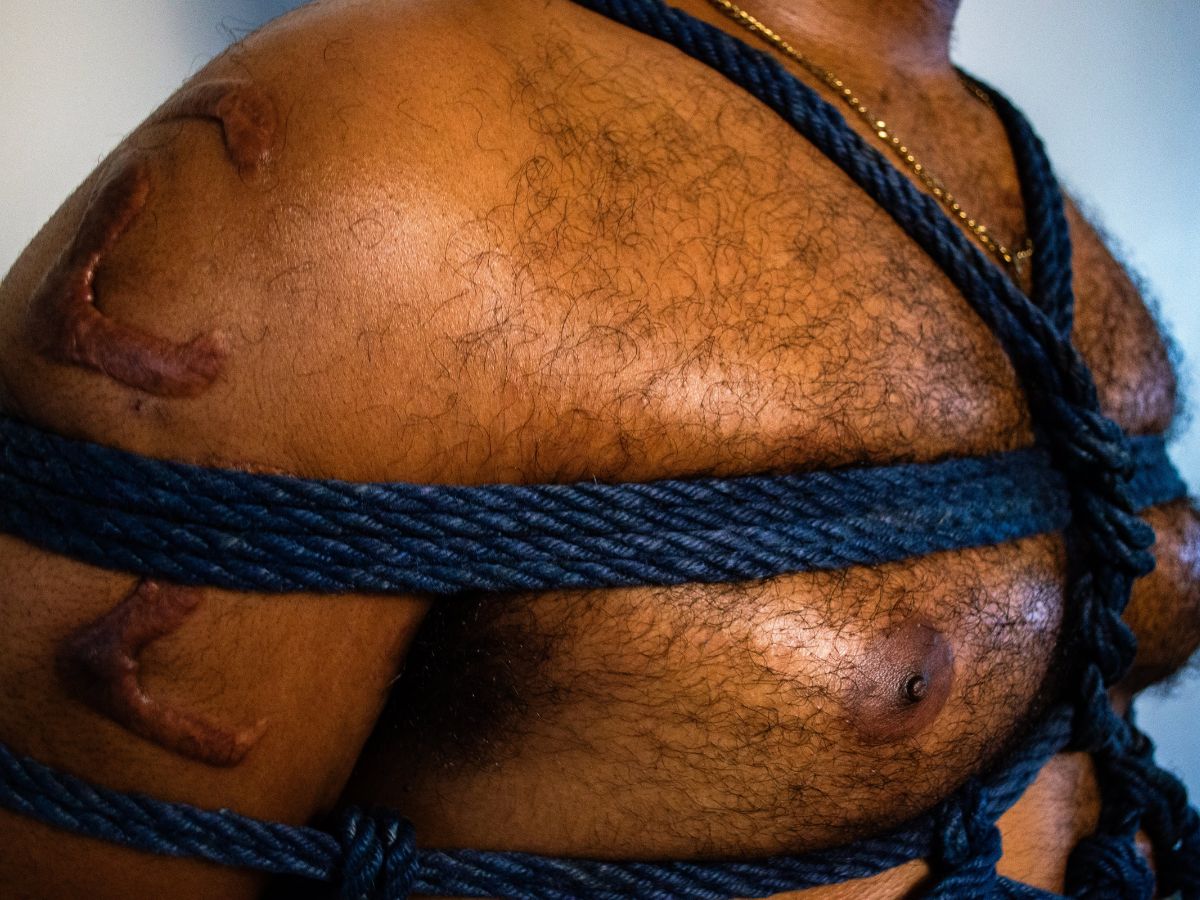
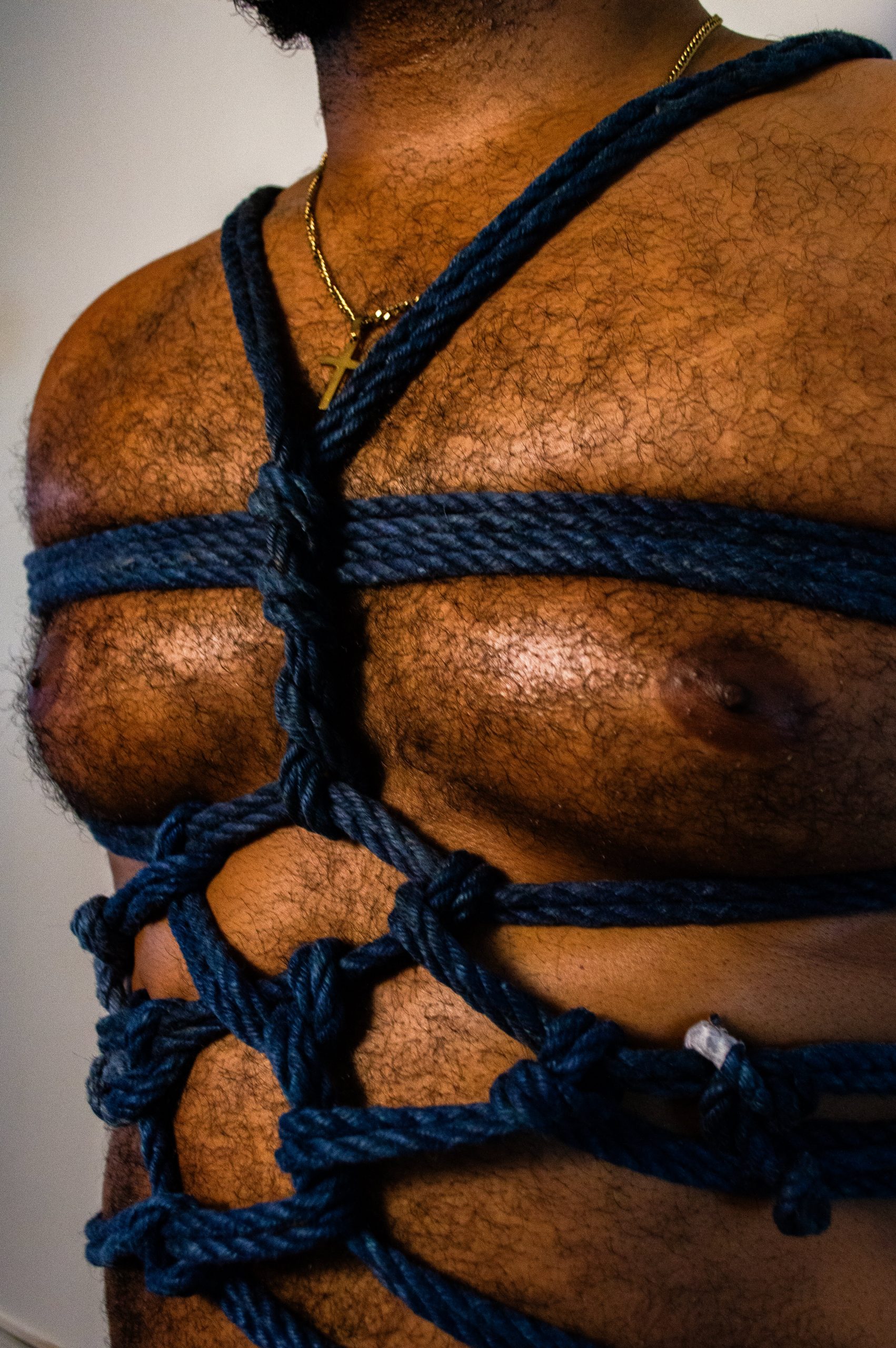
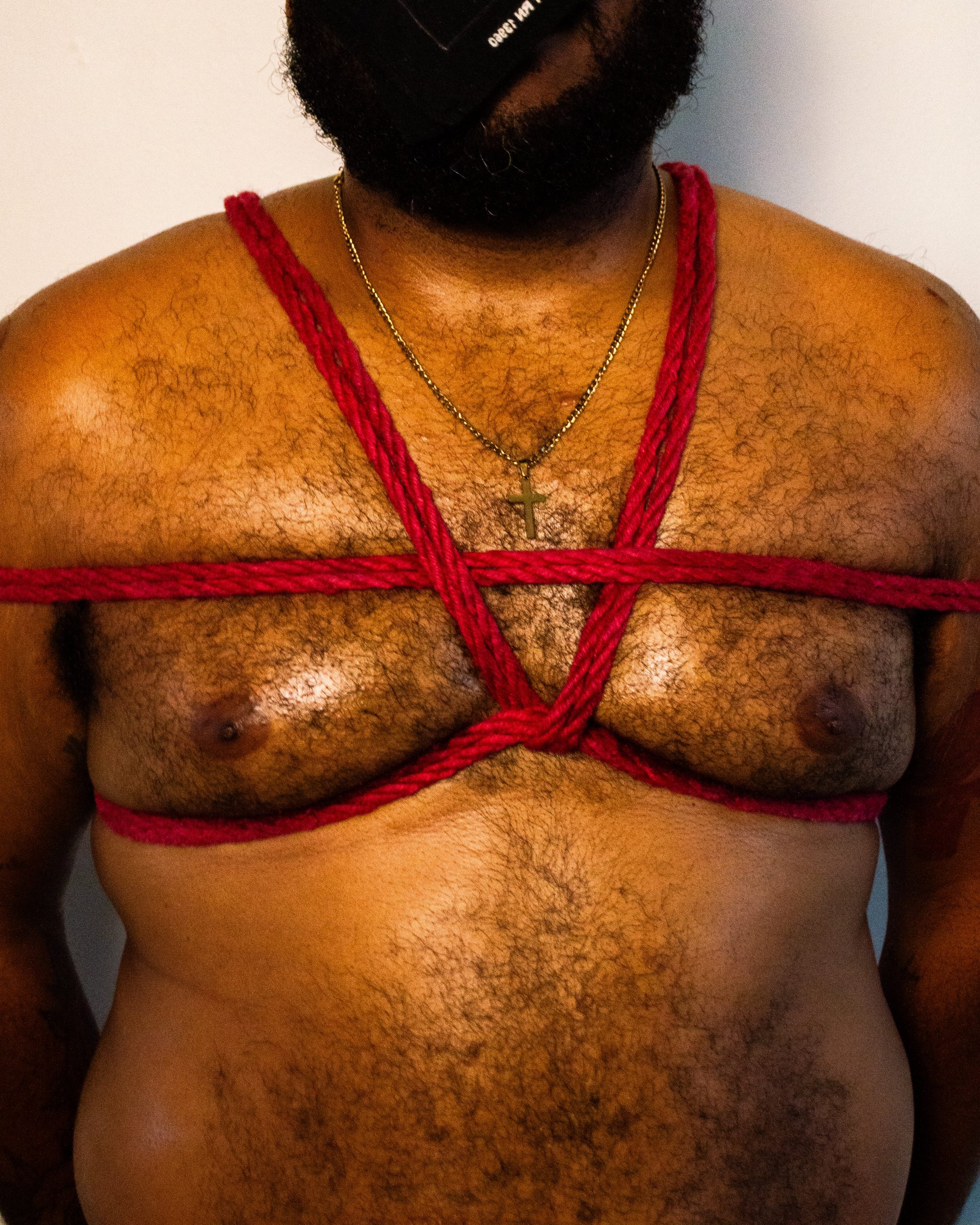
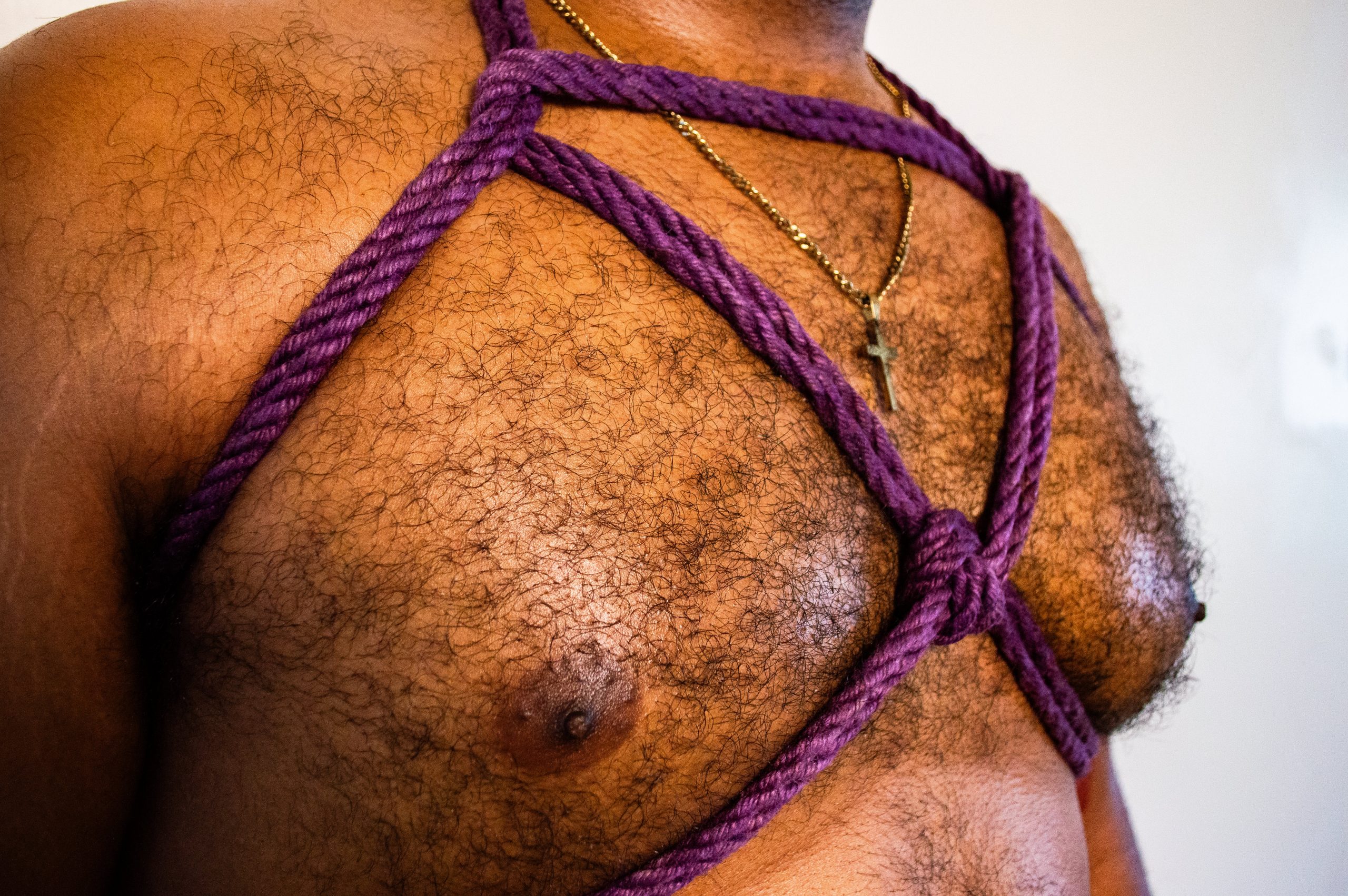
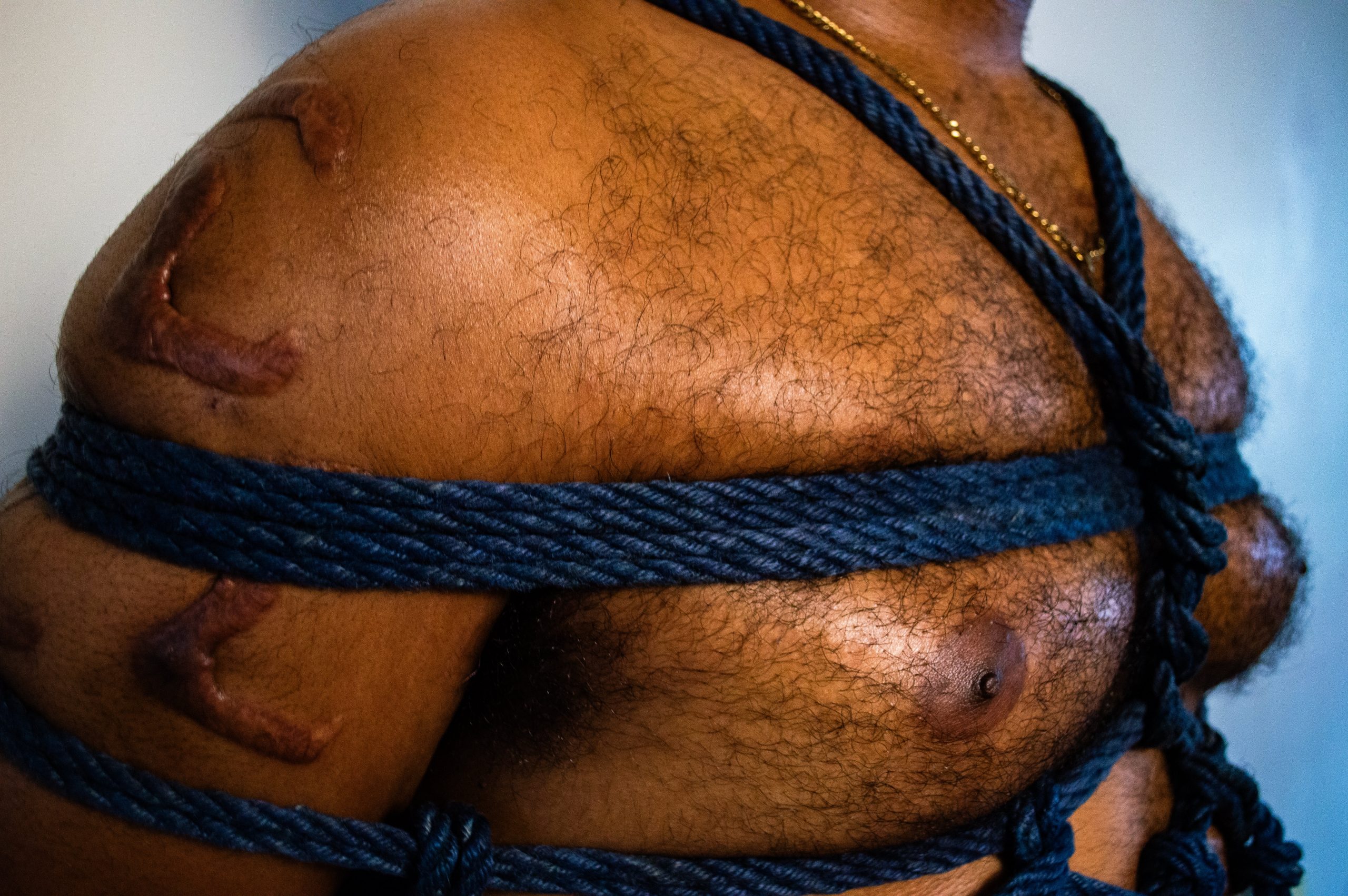
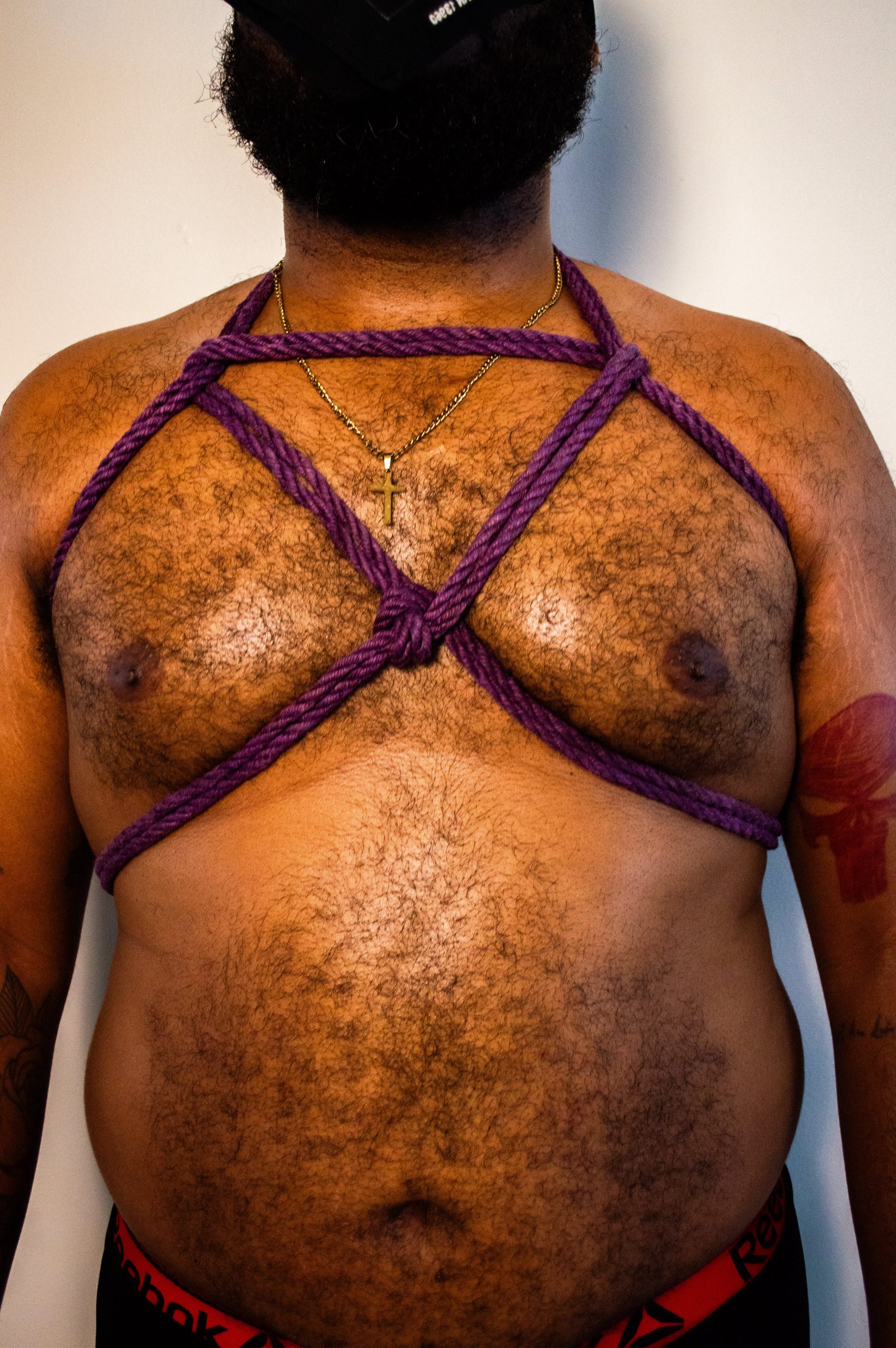
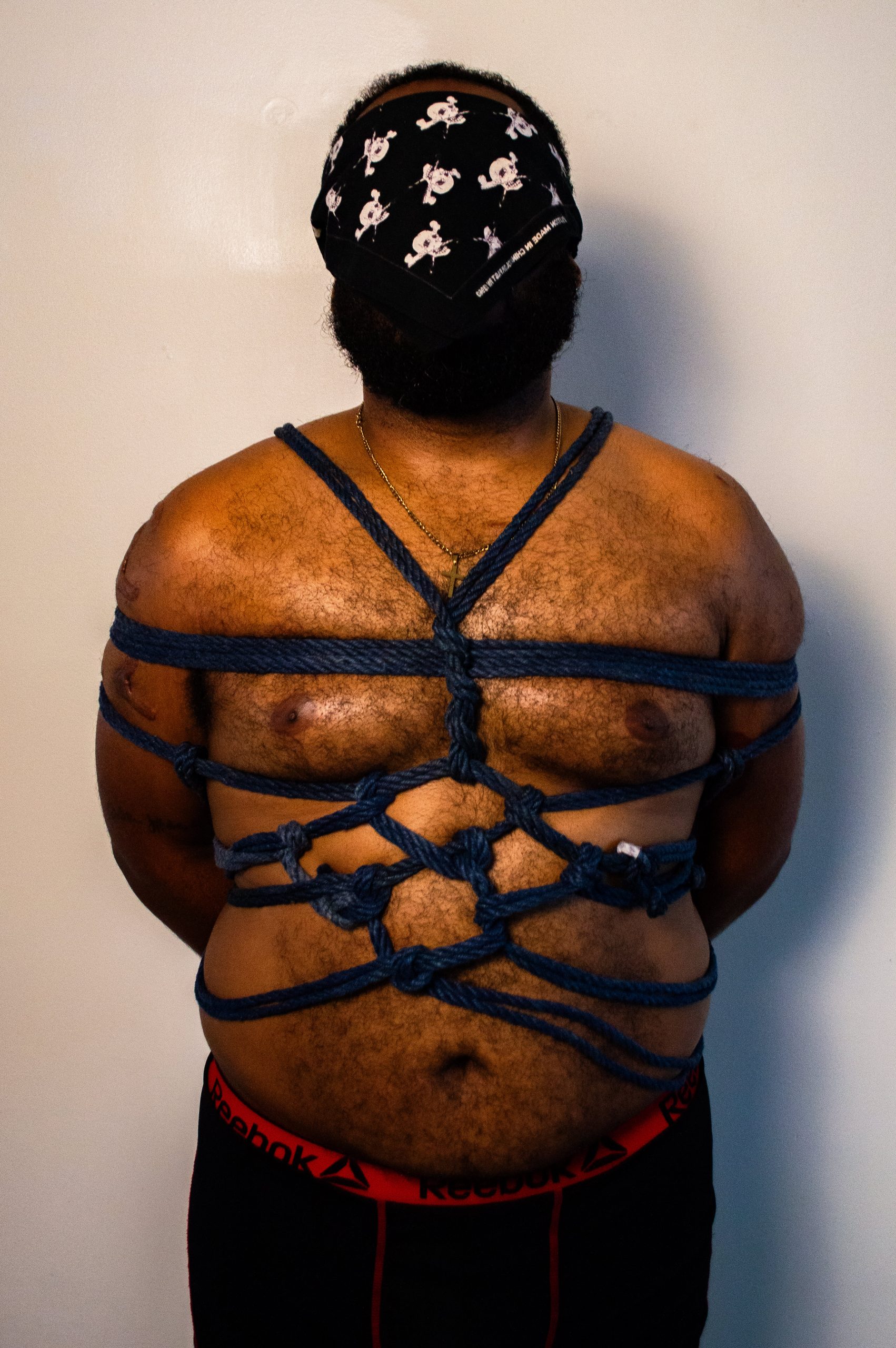
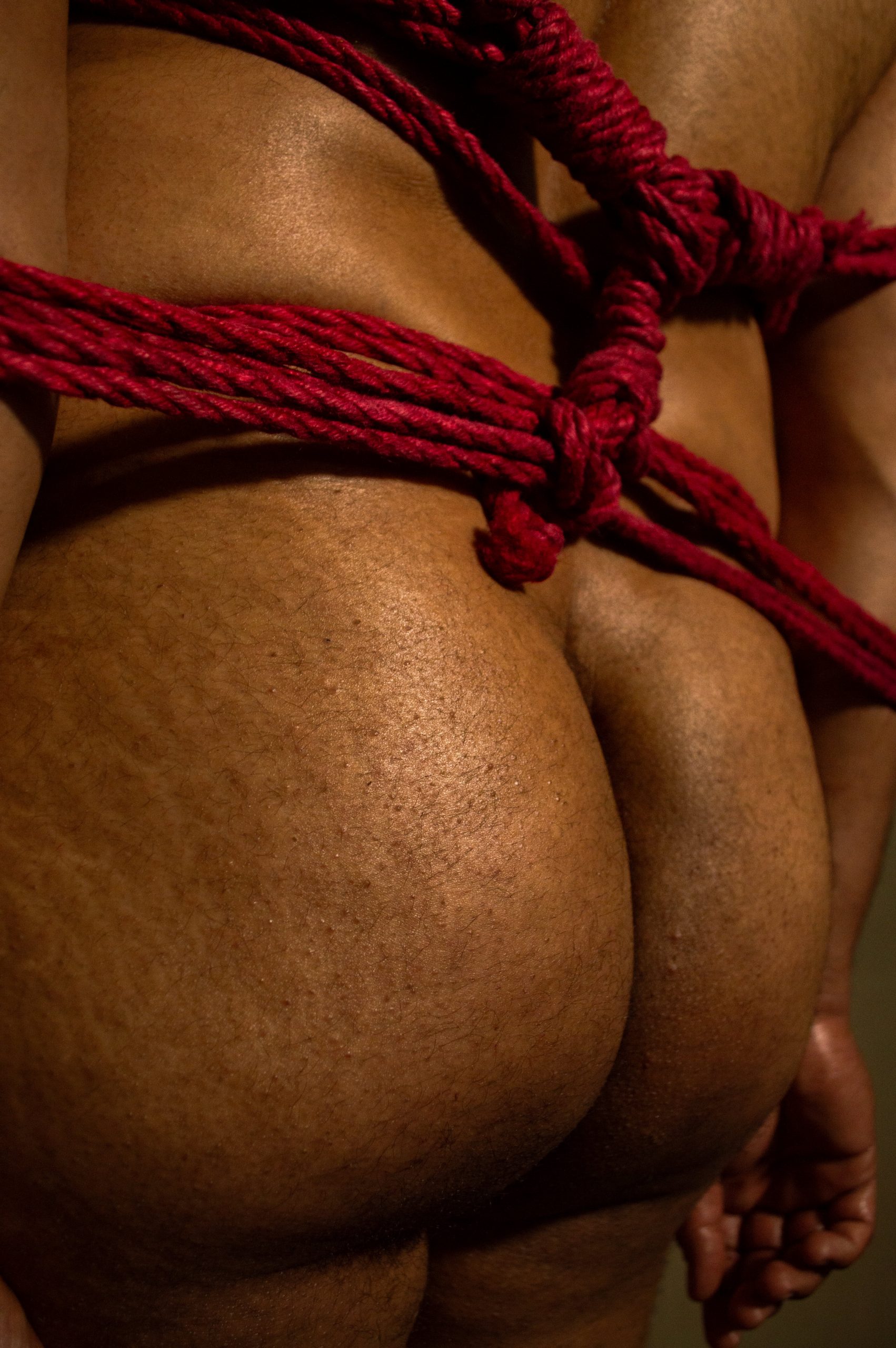
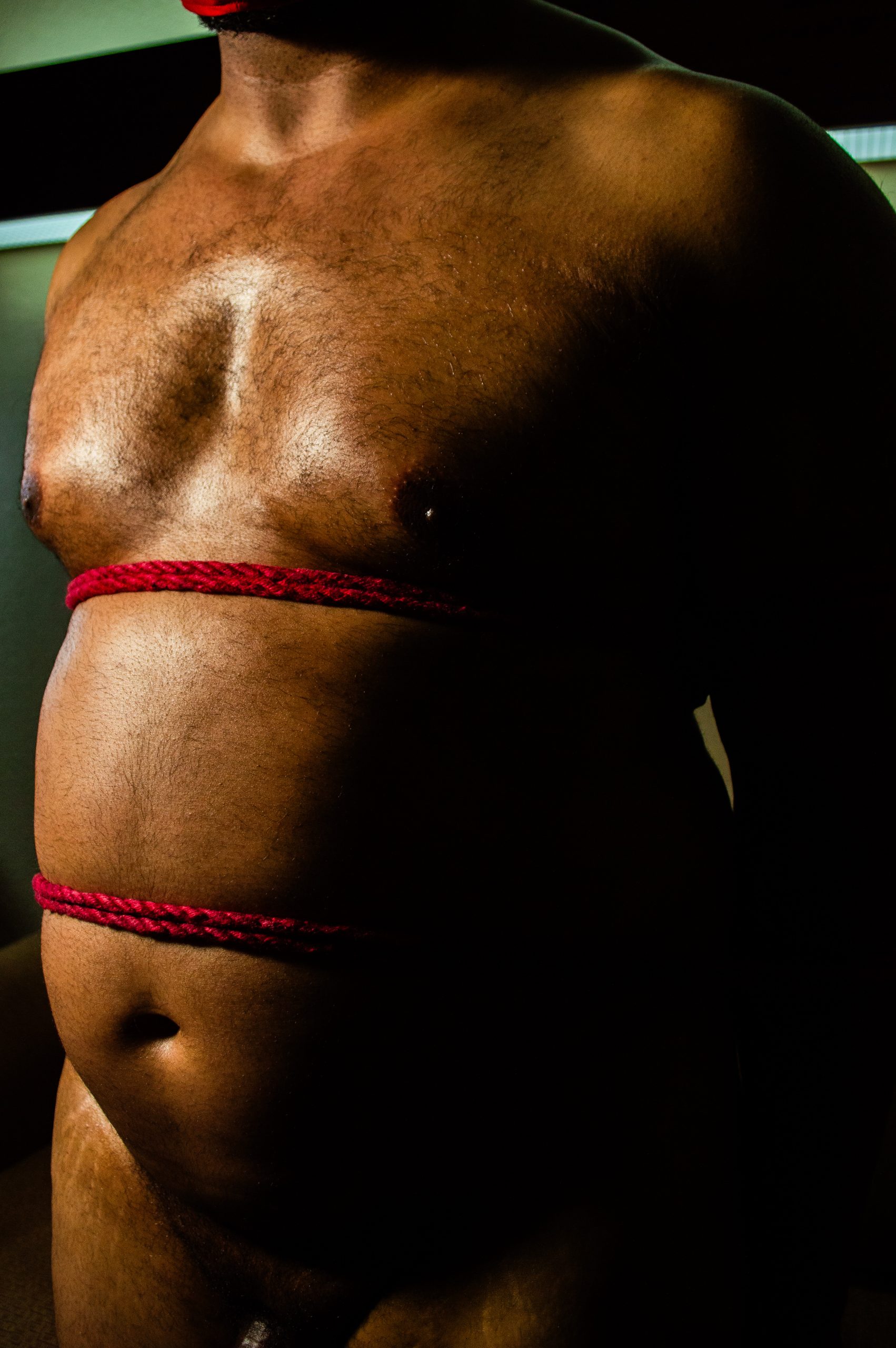
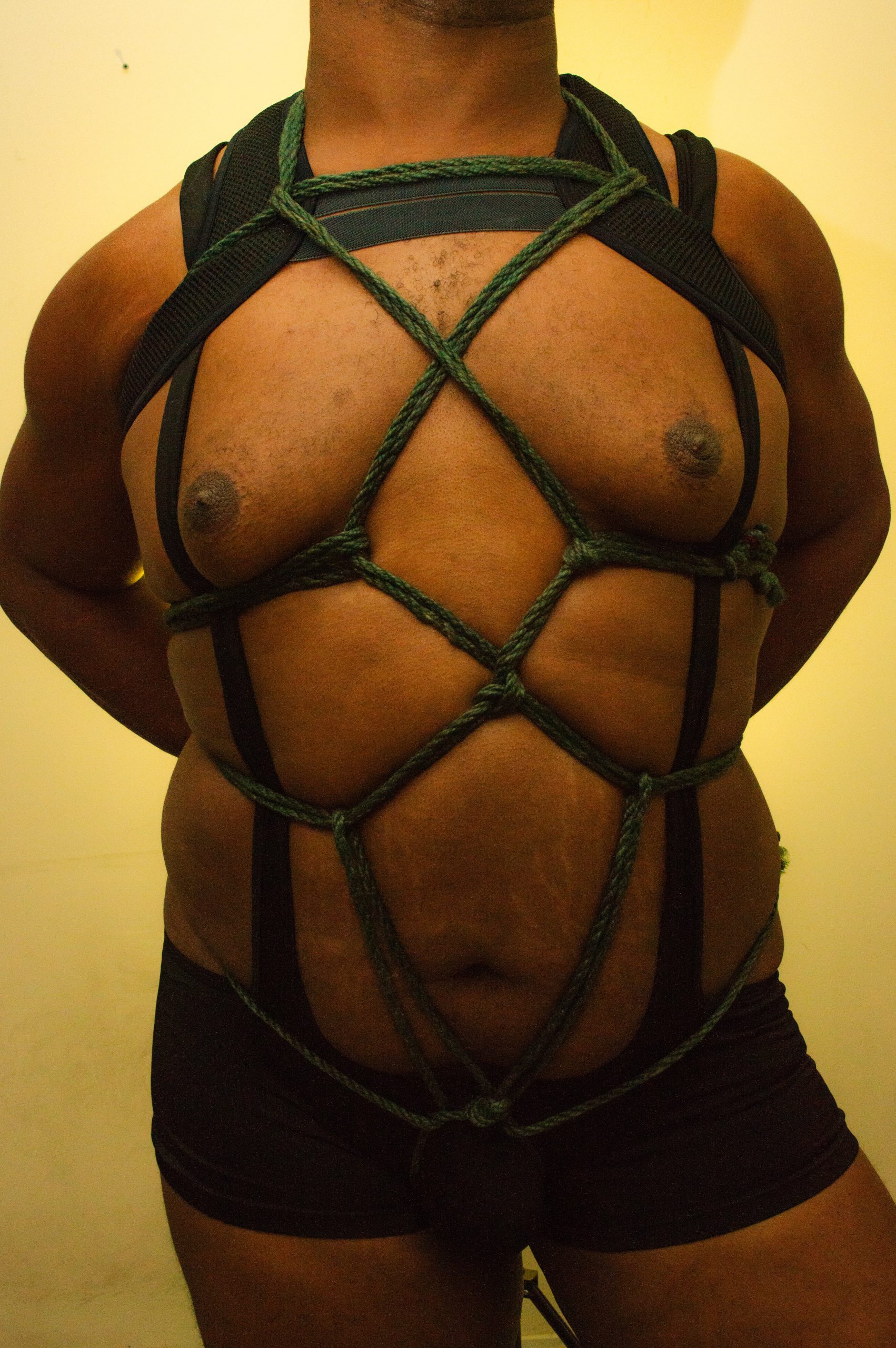
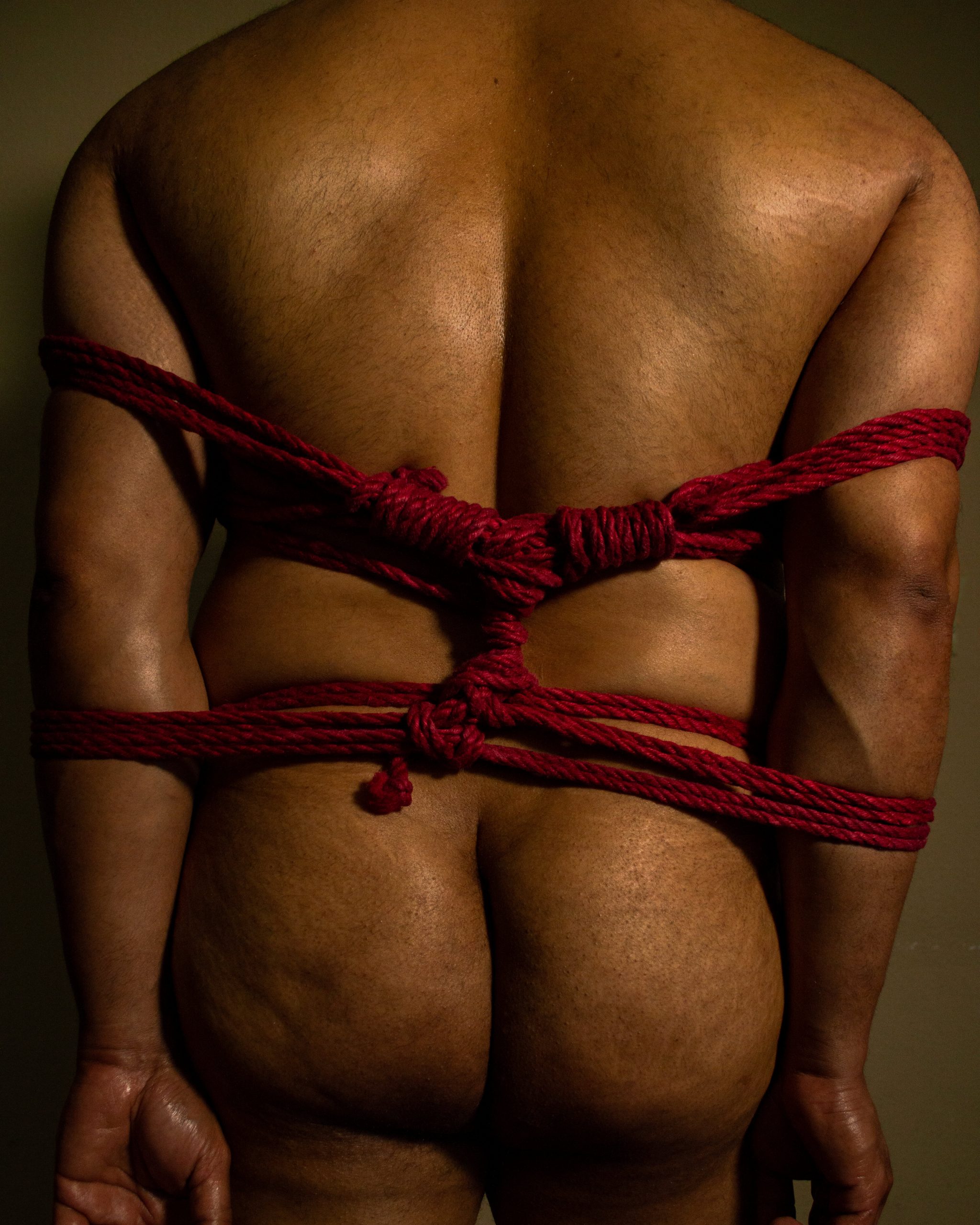
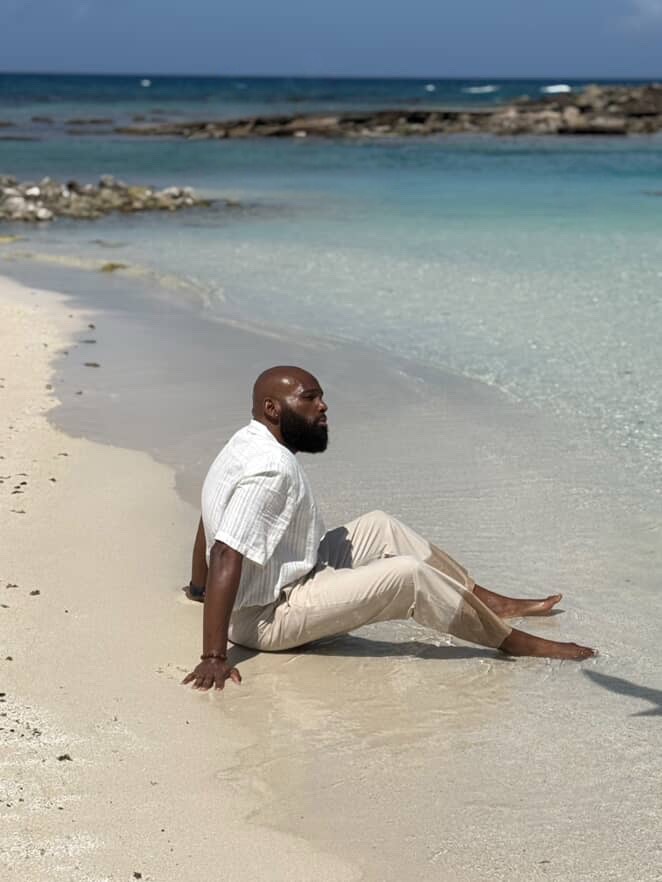
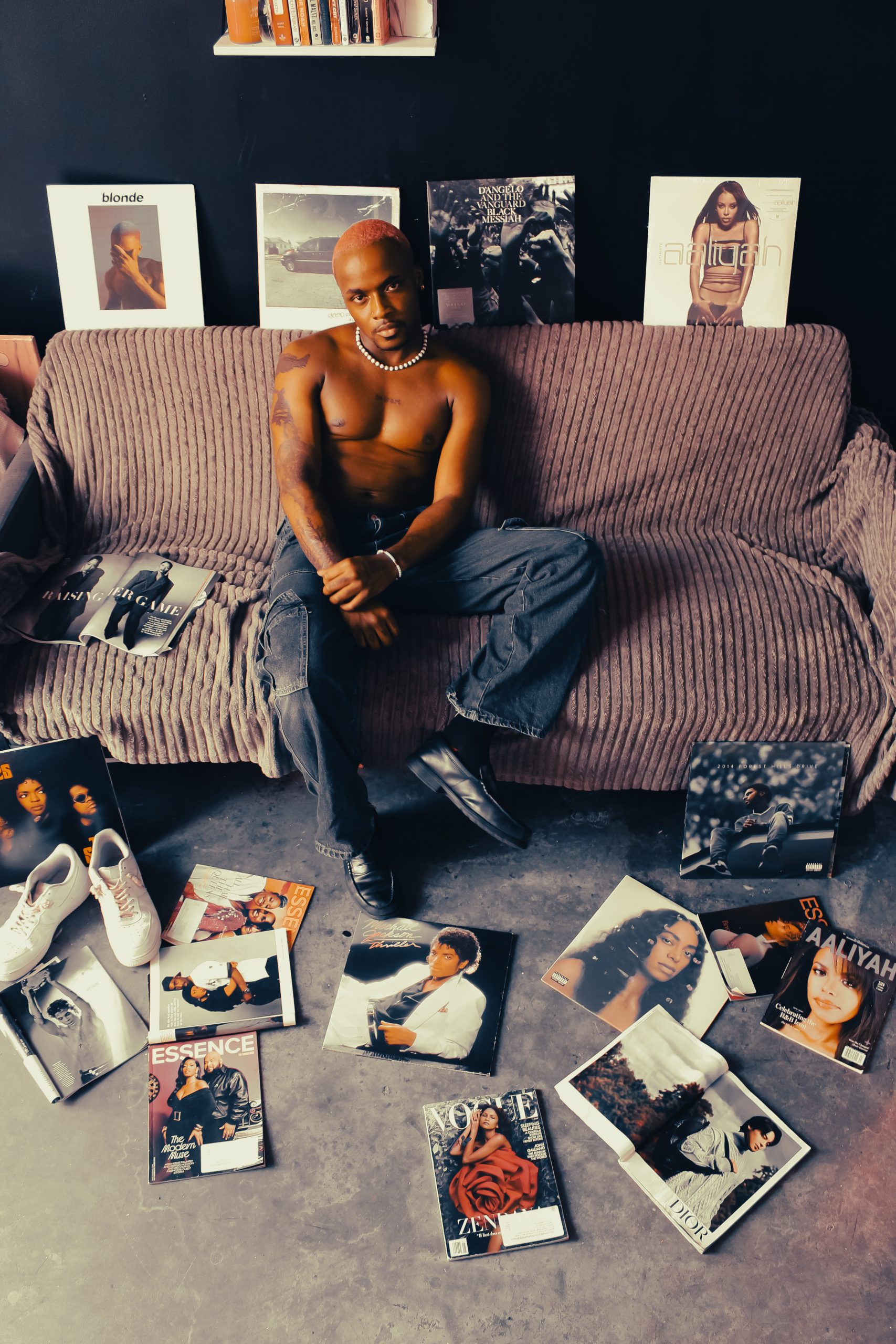
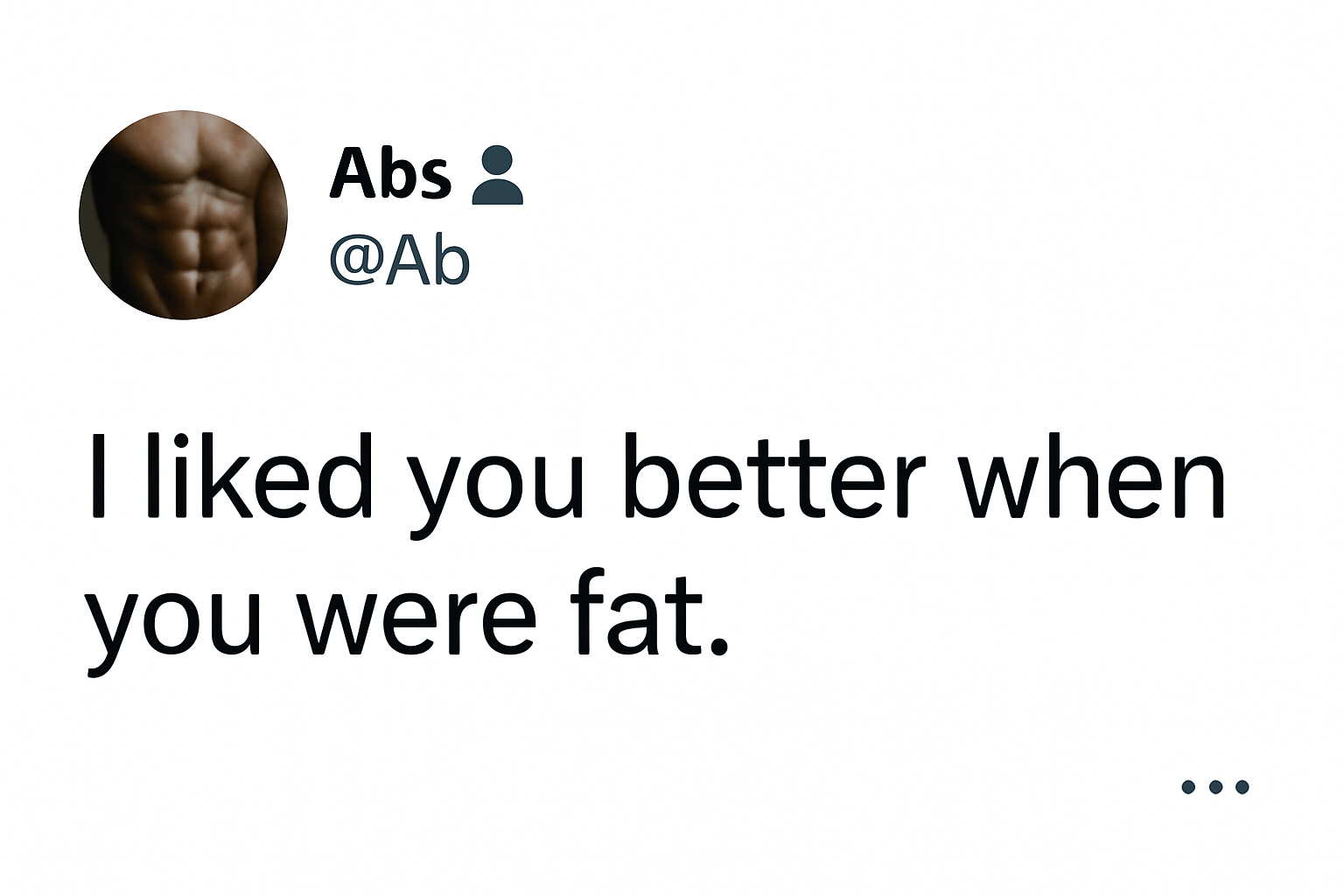
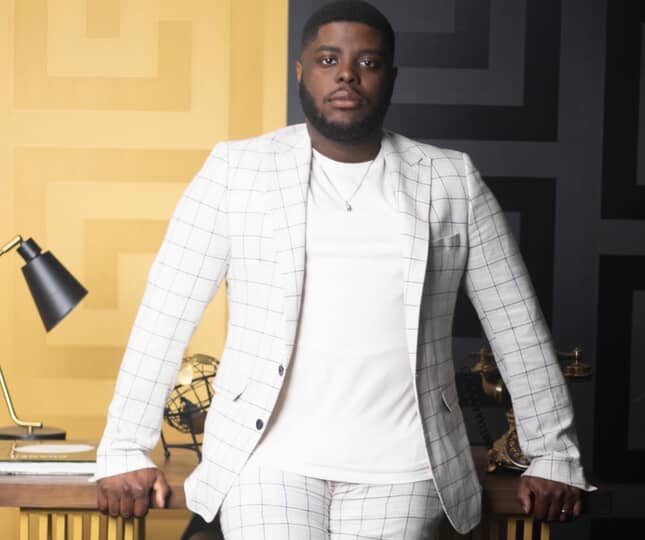
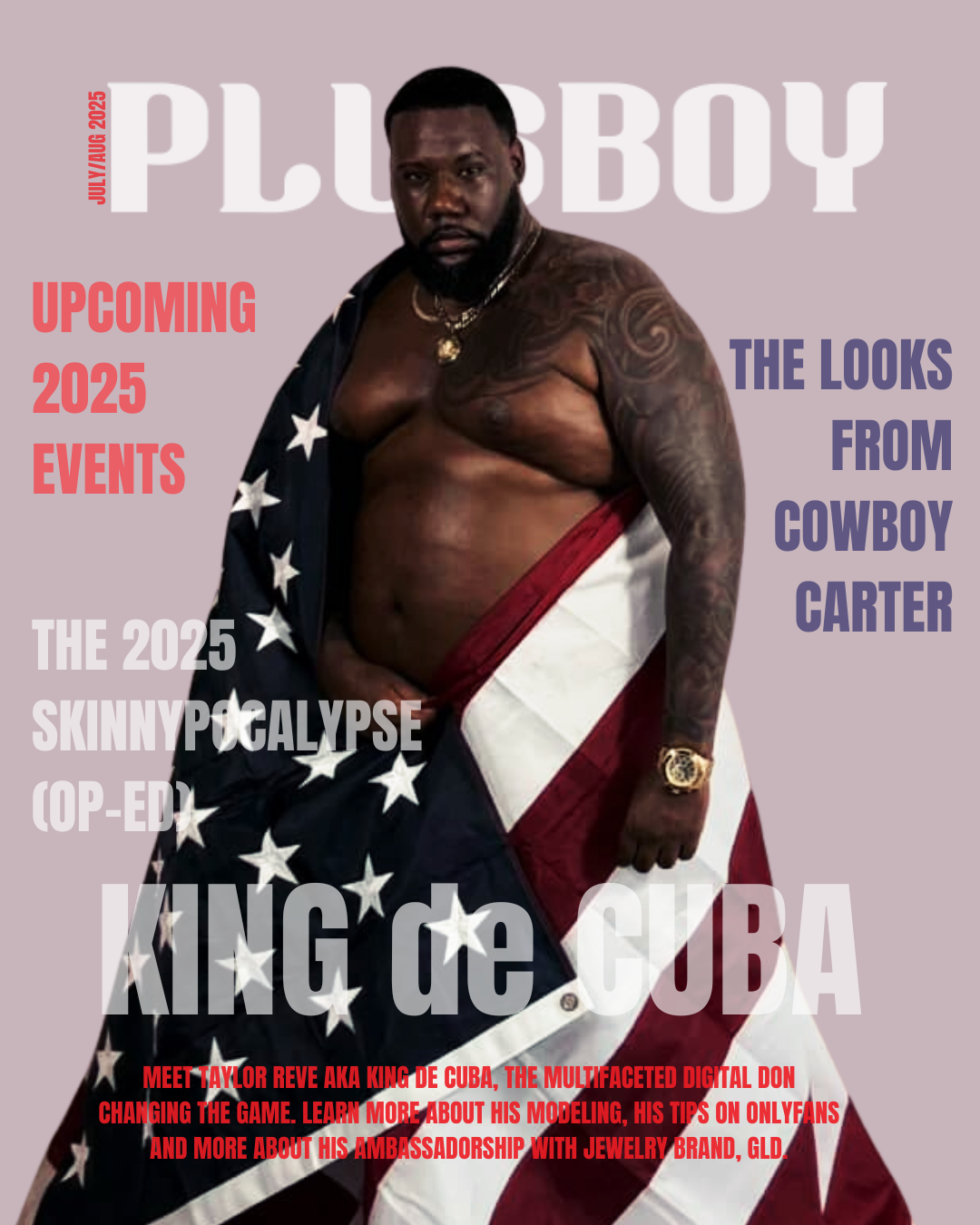
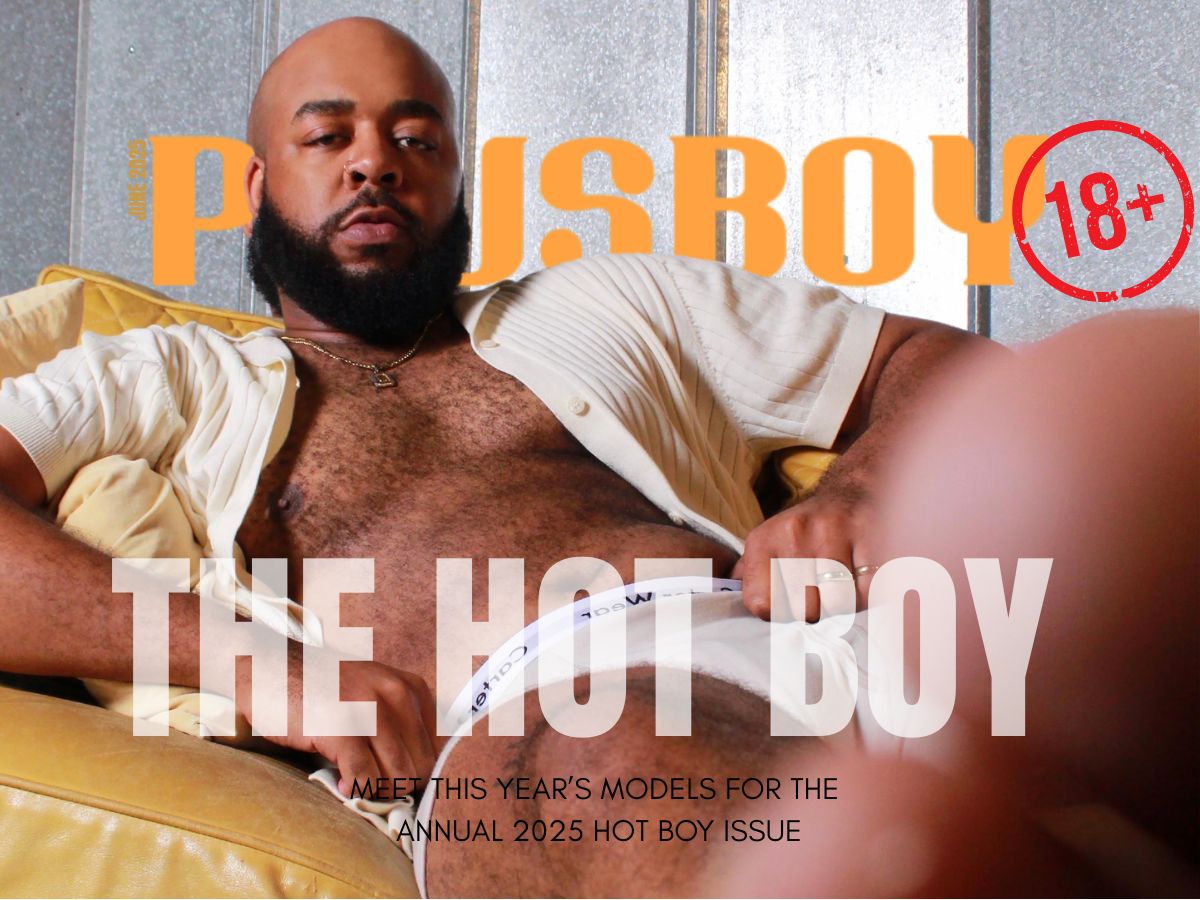
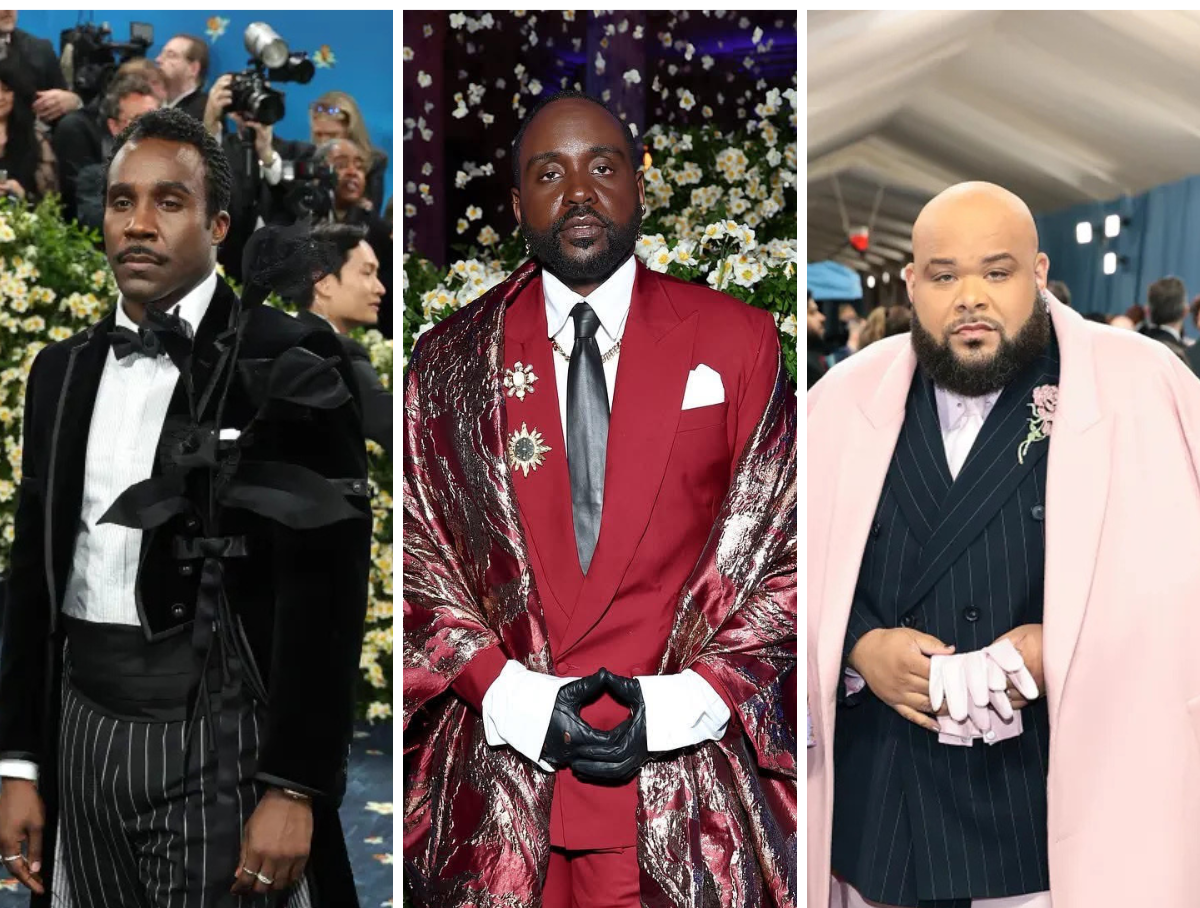
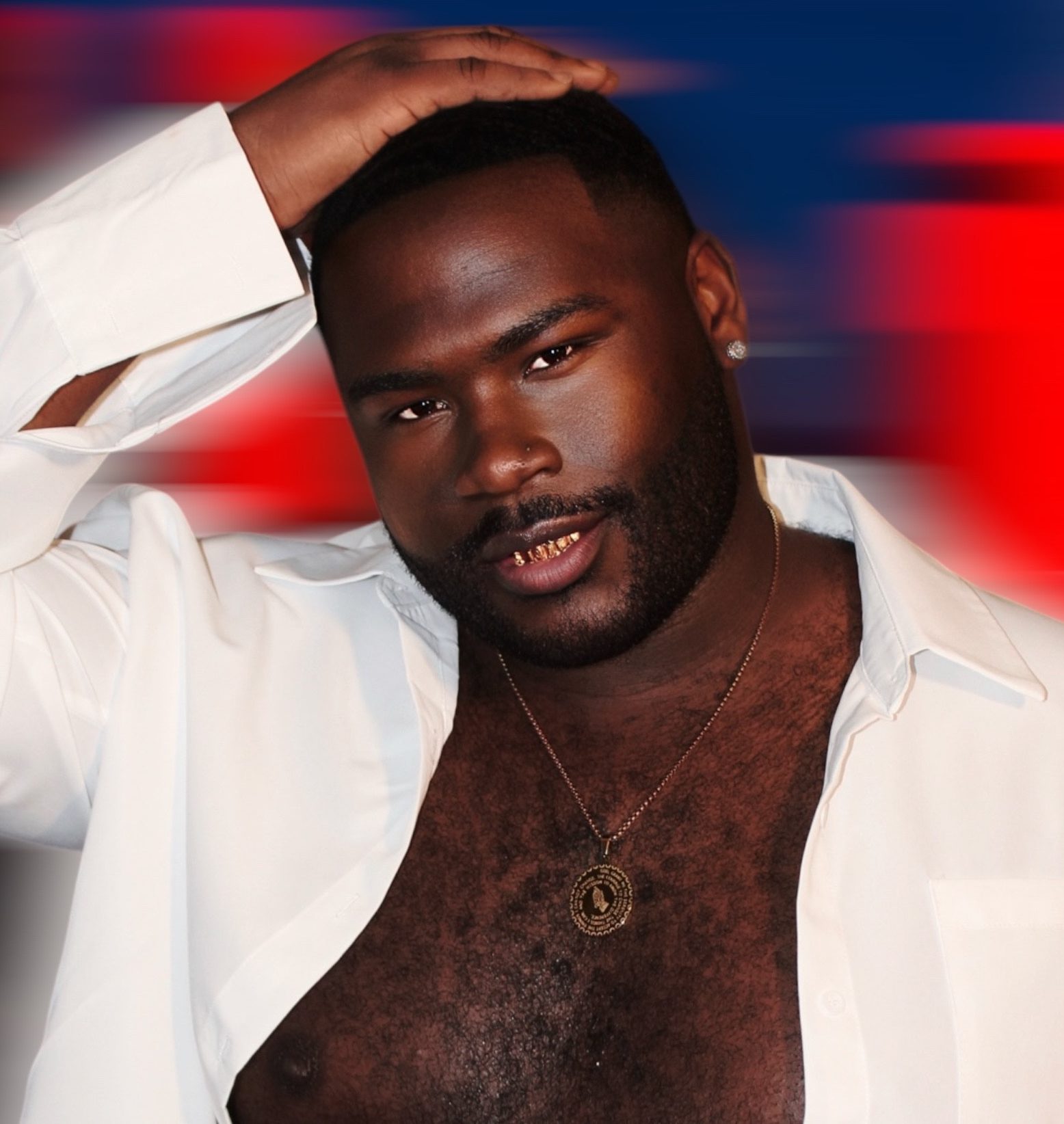
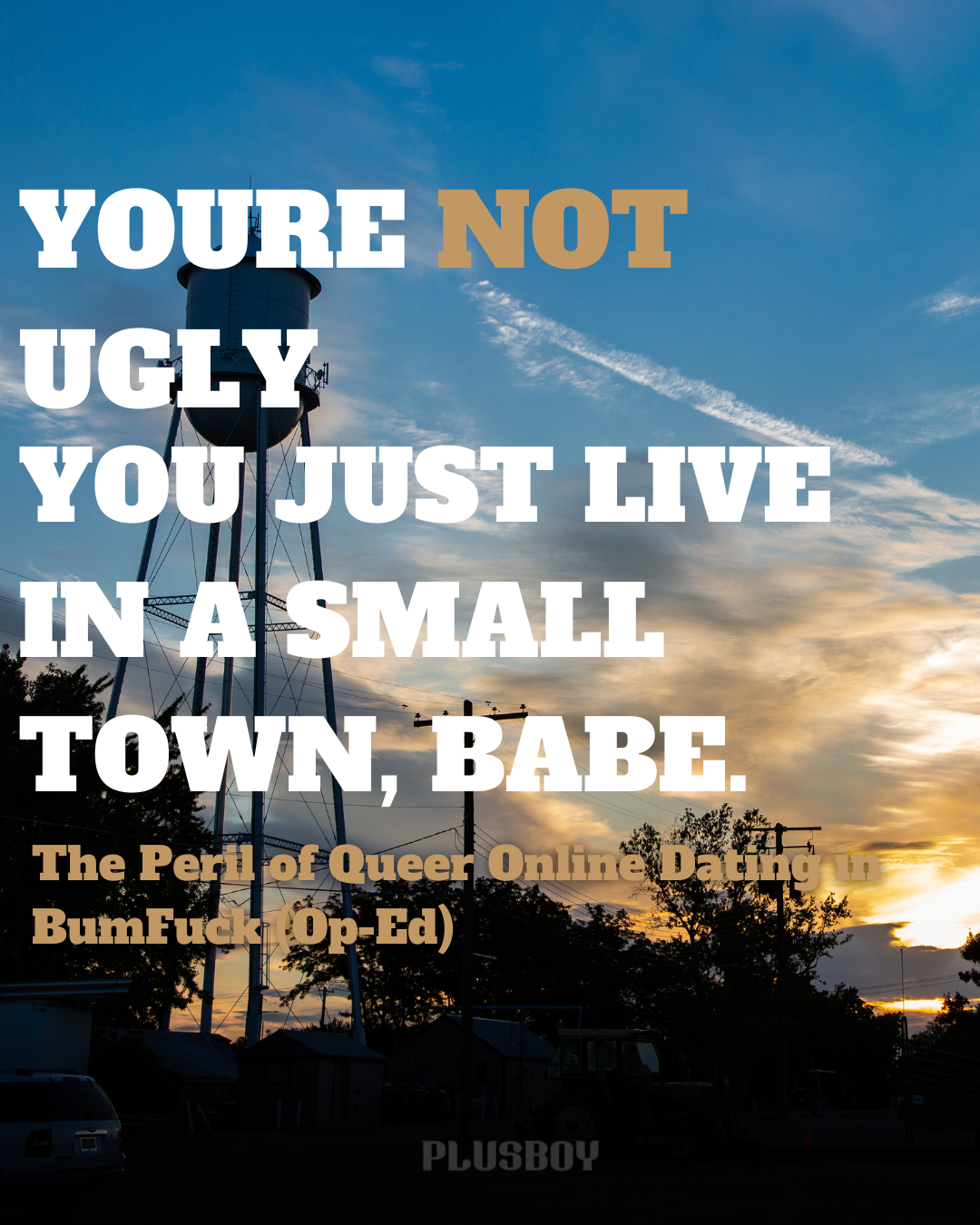

Leave a Reply